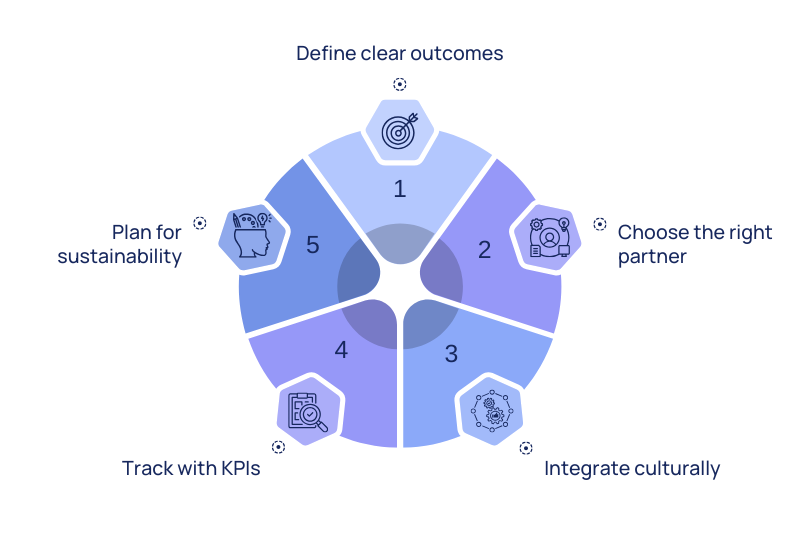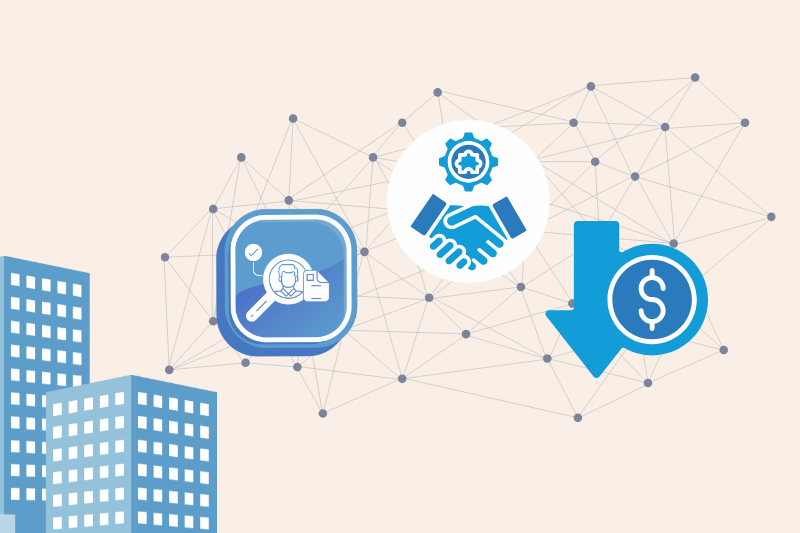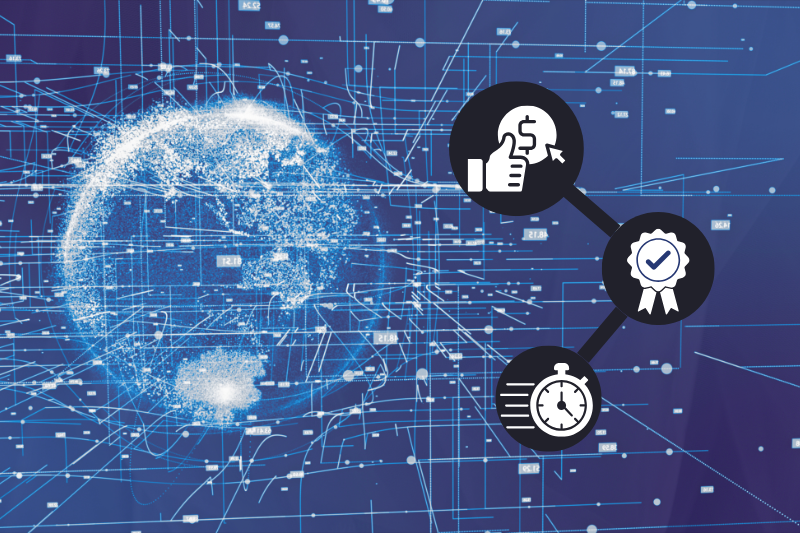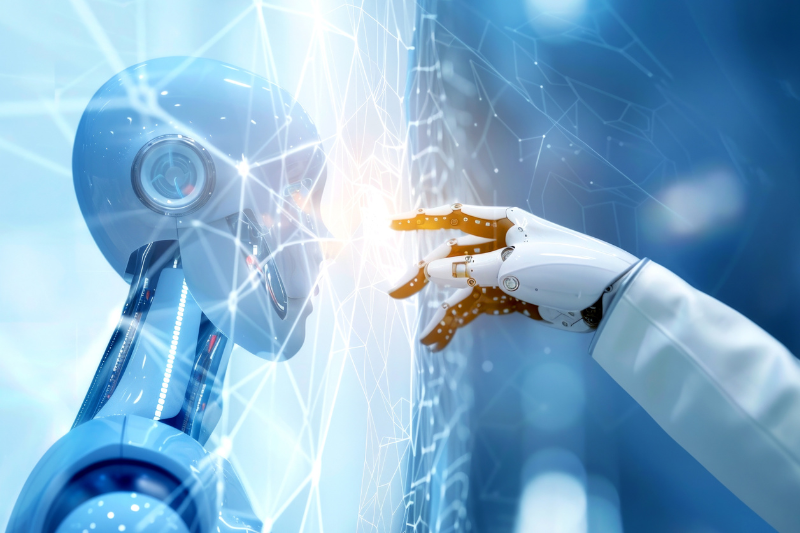For years, staff augmentation was primarily seen as a tactical solution, a way to reduce costs or fill temporary gaps in IT teams. But with the rise of artificial intelligence (AI) and data-driven transformation, this perspective is shifting.
Today, enterprises face an urgent need for specialized expertise in AI, machine learning, and data engineering, yet global talent supply continues to lag far behind demand. In this context, staff augmentation has become more than a cost-saving tool. It is a strategic enabler for building scalable teams, accelerating delivery, and sustaining innovation in highly complex projects.
The Challenge: Talent Gaps in AI and Data
The scarcity of AI and data engineering talent has become a defining barrier for digital transformation. According to McKinsey, 60% of companies cite the scarcity of tech talent as a key inhibitor to digital transformation.
For CTOs and founders, the implications are significant:
- Hiring specialized engineers locally can take 6–12 months and drive salaries higher.
- In-house teams often lack the bandwidth to handle both maintenance and innovation.
- Compliance-heavy projects, such as those in healthcare, demand niche expertise in HIPAA, GDPR, or payer-specific standards.
As a result, relying solely on internal hiring has become unsustainable. This is where staff augmentation, especially offshore models, enters as a scalable and resilient solution.
From Cost Savings to Strategic Value
Traditional outsourcing was often associated with low costs but mixed quality. Modern staff augmentation, however, focuses on strategic outcomes:
- Access to Rare Skills: Offshore augmentation provides access to niche AI roles such as NLP specialists, data pipeline architects, and compliance engineers that are scarce in major tech hubs.
- Agility and Speed: Augmented teams can be onboarded within weeks, enabling rapid scaling without the long hiring cycles of in-house models.
- Compliance and Governance: Modern staff augmentation includes structured oversight, ISO-certified processes, and regulatory alignment, ensuring sensitive AI projects remain audit-ready.
- Knowledge Transfer: Augmented staff embedded in client workflows contribute not just delivery, but institutional knowledge that remains after the engagement ends.
Case Study 1: Scaling Data Pipelines with Offshore Staff
Abacus Insights, a leading healthcare data platform, faced the challenge of scaling engineering capacity to manage vast health data pipelines while maintaining strict compliance.
TechKraft helped them build a structured offshore staff augmentation model that included:
- Specialized data engineers to expand pipeline capabilities.
- Embedded QA analysts to ensure quality throughout sprints.
- Governance frameworks aligned with U.S. healthcare regulations.
- Follow-the-sun development cycles leveraging global time zones.
The impact was clear: faster development timelines, greater resilience in data infrastructure, and seamless compliance. This example highlights how staff augmentation, when structured strategically, empowers enterprises to scale without compromise.
Case Study 2: Scaling Engineering Capacity with Cultural Alignment
Covalent Network, a U.S.-based workforce technology company, partnered with TechKraft to expand its engineering capacity while maintaining the agility and culture of a growing startup. The collaboration focused on integrating skilled engineers who could work seamlessly within existing teams, communicate effectively, and take full ownership of outcomes.
As the company’s CTO shared, TechKraft’s engineers “are skilled, collaborative, and aligned with our vision. Working with them feels like an extension of our own company.” This alignment enabled the client to scale its platform confidently, deliver with consistency, and strengthen its capacity for innovation.
This engagement exemplifies how strategic staff augmentation can bridge capability gaps while preserving cultural continuity. By embedding the right talent in the right structure, organizations achieve both scalability and long-term stability in their engineering operations.
Best Practices for Future-Ready Staff Augmentation
To fully realize the strategic value of staff augmentation, enterprises should adopt the following practices:

- Define clear outcomes: Augmented staff should be aligned to measurable deliverables such as reduced cycle times or improved model accuracy.
- Choose the right partner: Look for proven experience in AI and data engineering, plus certifications like ISO 27001 for compliance.
- Integrate culturally: Embed offshore engineers into daily standups and agile ceremonies for seamless collaboration.
- Track with KPIs: Productivity, compliance audit scores, and sprint velocity should be monitored to ensure accountability.
- Plan for sustainability: Invest in retention and professional development to build continuity beyond short-term contracts.
The TechKraft Advantage
At TechKraft, we see staff augmentation as a strategic enabler for AI transformation. Our teams bring deep expertise in AI, data engineering, and compliance, backed by ISO 27001-certified infrastructure.
Through our Build Operate Transfer (BOT) model, enterprises can begin with offshore augmentation and transition to long-term, in-house ownership once the team matures. This ensures scalability, compliance, and cultural alignment.
The Strategic Future of Staff Augmentation
As AI projects grow more complex, staff augmentation is shifting from a cost-saving tactic to a driver of strategic value. It enables enterprises to access rare skills, accelerate delivery, and maintain compliance, while building sustainable AI capabilities.
Ready to go beyond cost savings?
Discover how TechKraft’s offshore staff augmentation model can help you scale AI projects strategically and sustainably.



